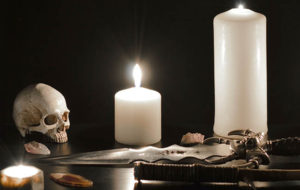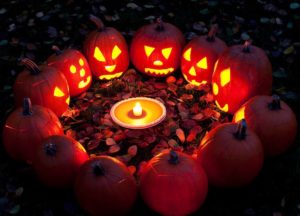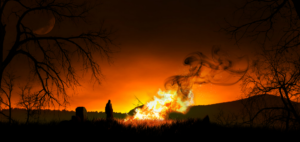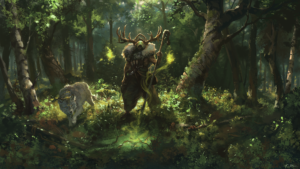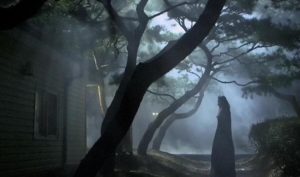Ghoulies and Ghosties and all things scary are hard to avoid this time of year. As Halloween approaches we are inundated with horror movies, blowup ghosts waving from every front yard, tales of witches flying high on broomsticks, and pumpkins sprouting eerie face. We trek to haunted houses, reveling in the thrill of monsters jumping out at us. Our inner child as well as our inhibitions are set free. In the United States, Halloween means trick or treating, costume parties, and over-indulging that sweet tooth.
Yet, centuries ago, October 31, meant Duck and Cower. For according to the ancient Celts and Druids, October 31 was the feast of Samhain, the night when the barrier between the natural and the supernatural world was lowered, and spirits of the dead rose, free to roam and terrorize. All our present-day Halloween traditions stem from those beliefs.
The short, cold, dark days of winter were approaching. The Celts gathered (safety in numbers?) and built huge bonfires to ward off the deepening darkness. As evening descended and frost blanketed the ground, families hallowed out gourds and placed an ember from the dying bonfire inside. They held these carved out gourds aloft as they made their way down the winding paths to their homes. Many wore mantles of animal skins for their warmth and as a disguise. The hope was to hide their identities from the menacing spirits and escape unharmed. If they reached their doorsteps safely, they left treats outside to appease the dead. Do all of these practices sound familiar?
Today our hallowed out gourds of choice are pumpkins. The animal skins have become costumes from Walmart or Party City. Masks are worn when trick or treating in the hope that neighbors won’t know who is out there begging for goodies. So while we retain some vestige of the fears that haunted our ancestors, we have transformed October 31, Halloween, from a night of fright to an all-out party.
According to former priest and Catholic theologian William Maestri, the early Christian church saw the “pagan” celebration of Samhain (Celtic New Year) as an opportunity. They seized the day and made it their own. Samhain became All Souls Day, or All Hallows Eve. And when the sun rose the next morning, surprise, it was All Saint’s Day, a day to honor the dead. As then Father Maestri liked to point out, “It’s not the dead we should be afraid of, it’s the living.”
There is one other concept to consider. What if ghosts or spirits are not out to harm us? What if they are here twenty-four-seven because they never left? As ghosts they retain the same personalities they had in life. Grumpy in life, grumpy in death. Playful in life, playful in death. So while we may encounter some disgruntled characters, on average, the spirits we bump into are friendly. Think about it this way: if we are poking around in their space like an attic or abandoned building, we’re more likely to startle them awake then they are waiting to jump out at us.
So my advice is this: On Halloween, the Celtic Feast of Samhain, stay tuned. Stay Alert. The ghost you seek, may be standing right behind you.

